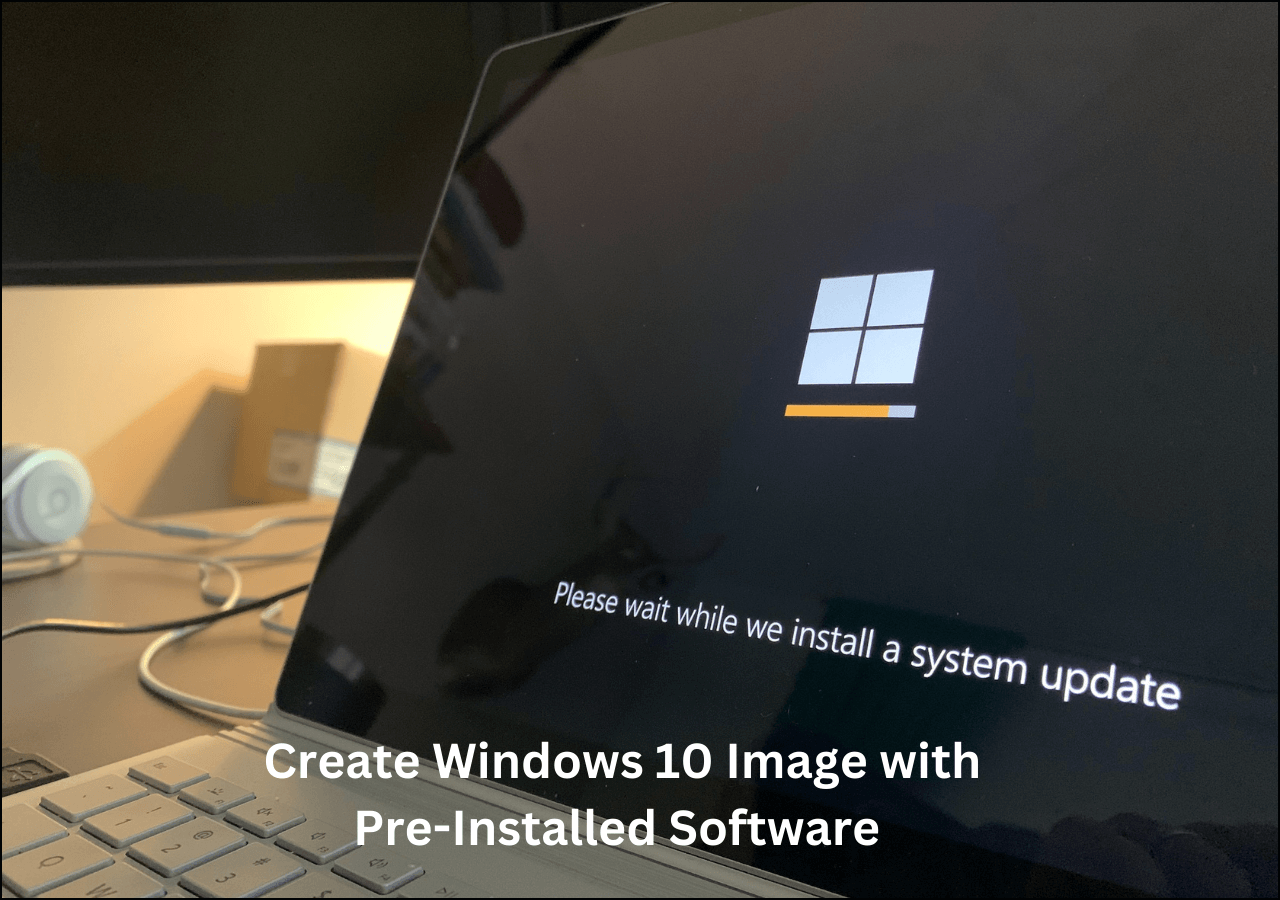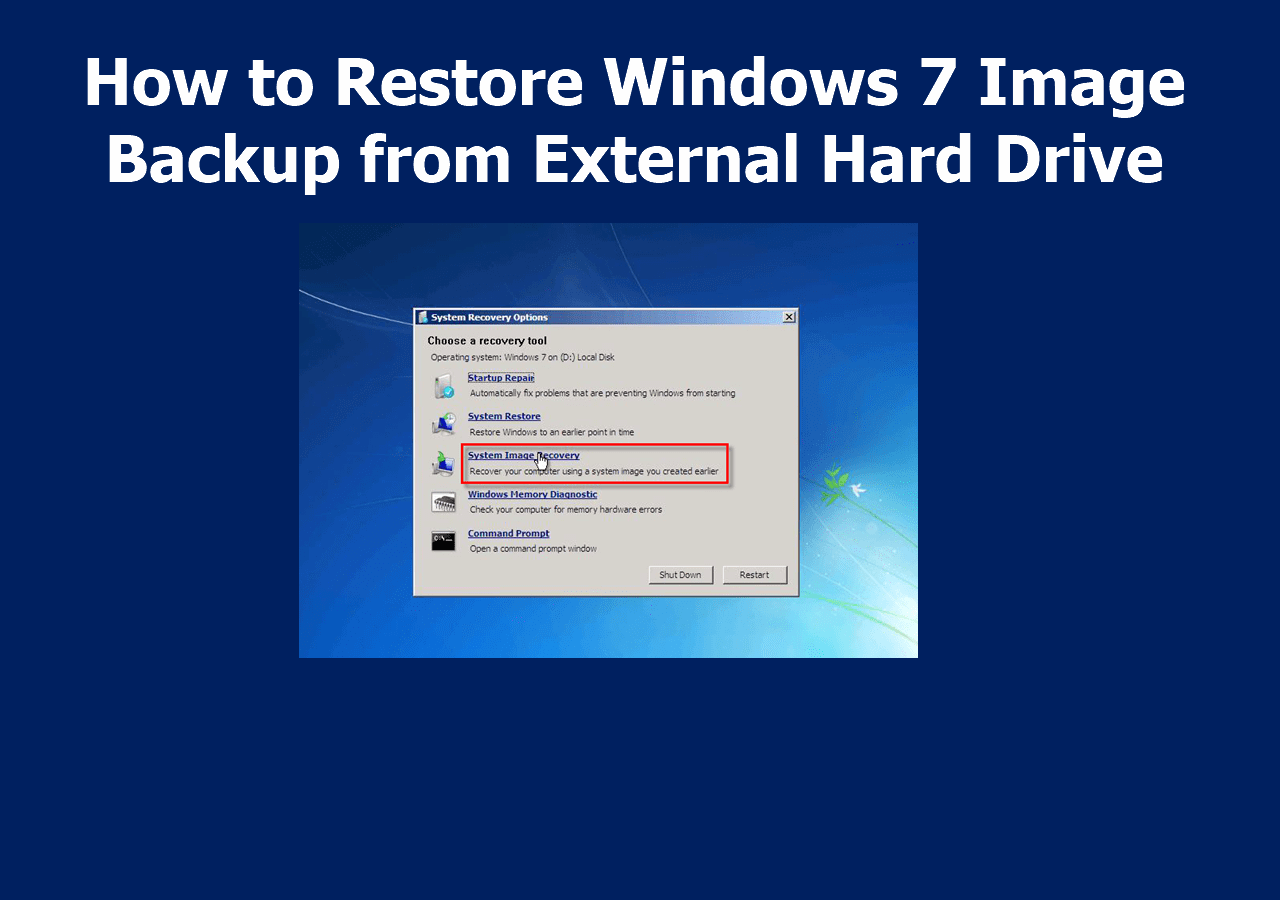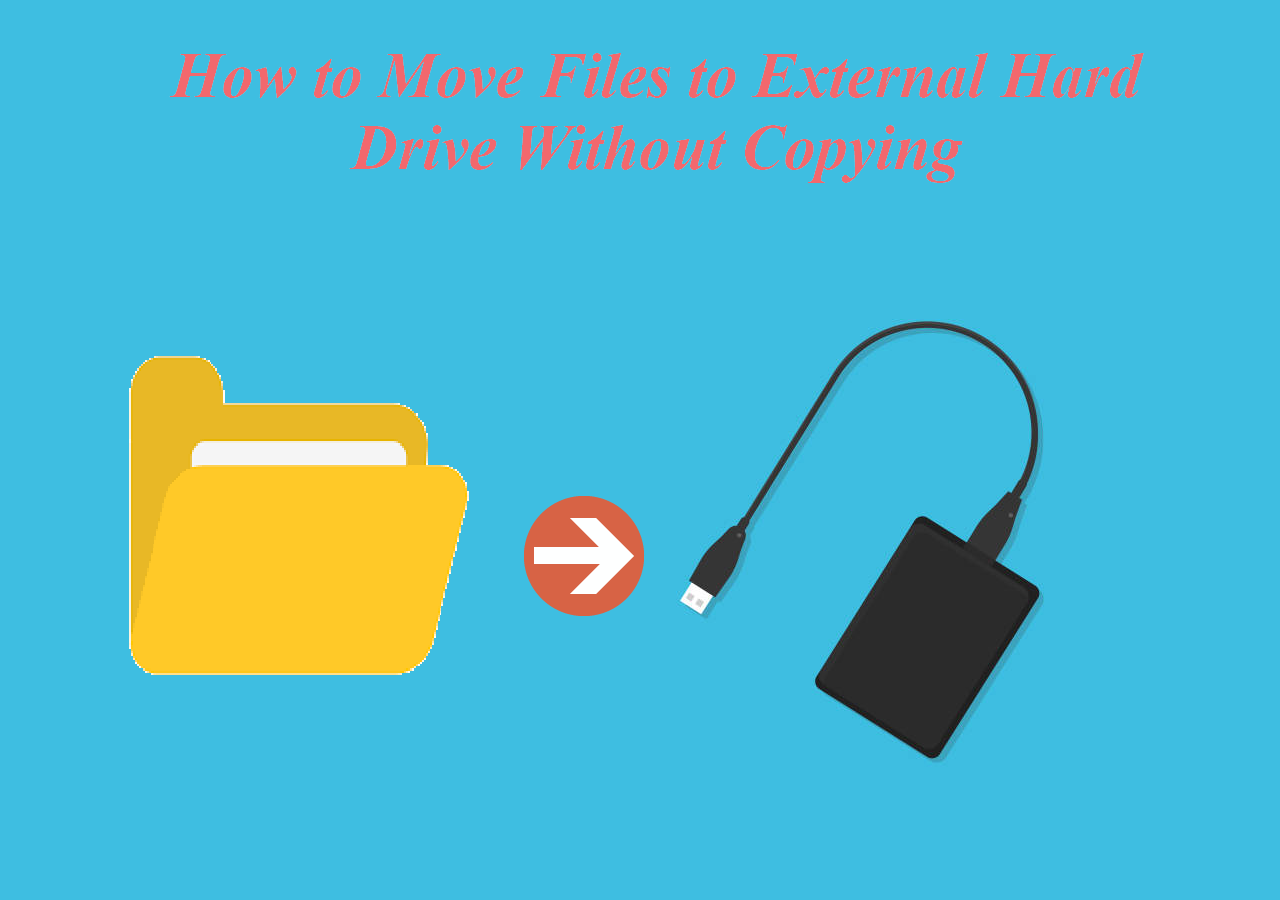Page Table of Contents
NAS devices, being hardware have chances to damage over time; it's always recommended to backup Synology NAS to pCloud. No matter if you have your office data or personal data in your NAS device, you can't imagine losing it. To address such concerns, this post from EaseUS will show you practical methods to ensure your data's maximum safety.
What Is pCloud
pCloud is a secure cloud storage solution. It offers multiple data management options, and its two-factor authentication ensures maximum privacy and security. As it offers remote storage options, it has become essential for business owners to create a backup of their data on pCloud.
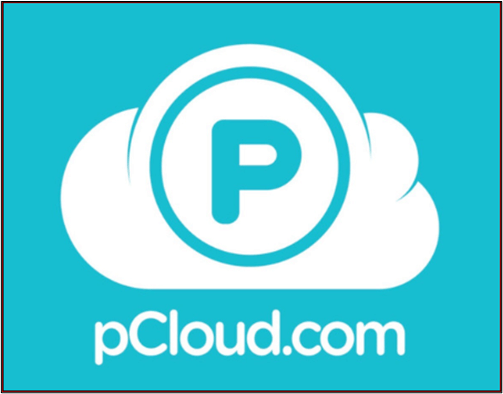
The cross-platform compatibility of pCloud allows synchronization across various devices, including desktop, mobile devices, and even NAS Synology. Moreover, it's a user-friendly interface, and ultimate protection provides convenience and peace of mind.
Some distinct features of pCloud are:
- Client-Side and Server-Side encryption
- Recovering all file versions
- Secure download links and file sharing with passwords
- Edit and update data for all collaborators
- Perform Windows automatic backup and upload files to pCloud
- Remote upload via URLs
Why Backup Synology NAS to pCloud
No doubt Synology NAS are reliable file storage solution, but being hardware, they may encounter failures, accidents, or disasters. pCloud is secure and redundant to unexpected events that may lose data. Moreover, Ransomware attacks can damage local systems, and their backups can also be destroyed.
That's why you need a method to protect your backup from ransomware. Having a pCloud backup will reduce the risk of losing your important data.
Its remote access allows you to access files even when you don't have your NAS device. In addition, pCloud backups simplify file transferring to new hardware. It also offers the benefit of sharing files with others remotely without handling your NAS device.
In every aspect, incorporating Synology NAS data into your pCloud enhances data security and recovery options. This decision will address the limitations of relying only on local storage solutions.
2 Ways to Backup Synology NAS to pCloud
There are numerous ways to back up Synology NAS to pCloud, but finding an effective as well as secure method is challenging. When it comes to your personal or professional data, you can't compromise on its security. Here are two authentic ways to create Synology NAS backup Cloud, like to pCloud.
The table shows the features of both methods to help you choose.
| Comparison | EaseUS Todo Backup | Rclone |
| Effectiveness |
👍High, with automatic backup options |
Medium |
| Duration |
|
|
| Difficulty |
Easy (no advanced expertise is required) |
Difficult (work on commands, suitable only for Tech-Savy people) |
Way 1. Backup Synology NAS to pCloud via Cloud Backup Software
One of the most effective methods to back up Synology NAS to pCloud is through EaseUS Todo Backup. It is versatile and user-friendly Cloud backup software designed to protect your data.
No matter if you're an individual, startup owner, or enterprise user, EaseUS Todo Backup Home offers multiple features. It ensures the security of your important files, applications, and systems. Whether you have personal documents or complex system configurations, you can rely on this app. Along with securing your data, it also guarantees high-end protection.
Secure Download
EaseUS todo Backup incorporates innovative technologies into high-end solutions. For every file type, it ensures maximum data backup, data restore, storage-saving, and anti-ransomware results. Its simple user interface and reliability have increased its user base to millions.
Here are some key features of EaseUS Todo Backup Home:
- Create a backup disk
- Provide 250GB of free cloud storage space
- Clone a hard drive and image a hard drive
- Back up data to local drives, external hard drives, NAS, network, and cloud
- Create an incremental or differential backup of a disk
Reap the benefits of this easy-to-use app and protect your data for a lifetime. After downloading it, you can follow the steps below to back up your files to pCloud:
Step 1. To begin the backup process, click the Select backup contents button.

Step 2. Four data backup categories are listed: File, Disk, OS, and Mail.

Step 3. Lists of both local and network files are shown on the left-hand side of the screen. Expanding the directory so that you can choose the files to back up.

Step 4. Follow the guidance on the screen and choose the place where you want to store the back up.
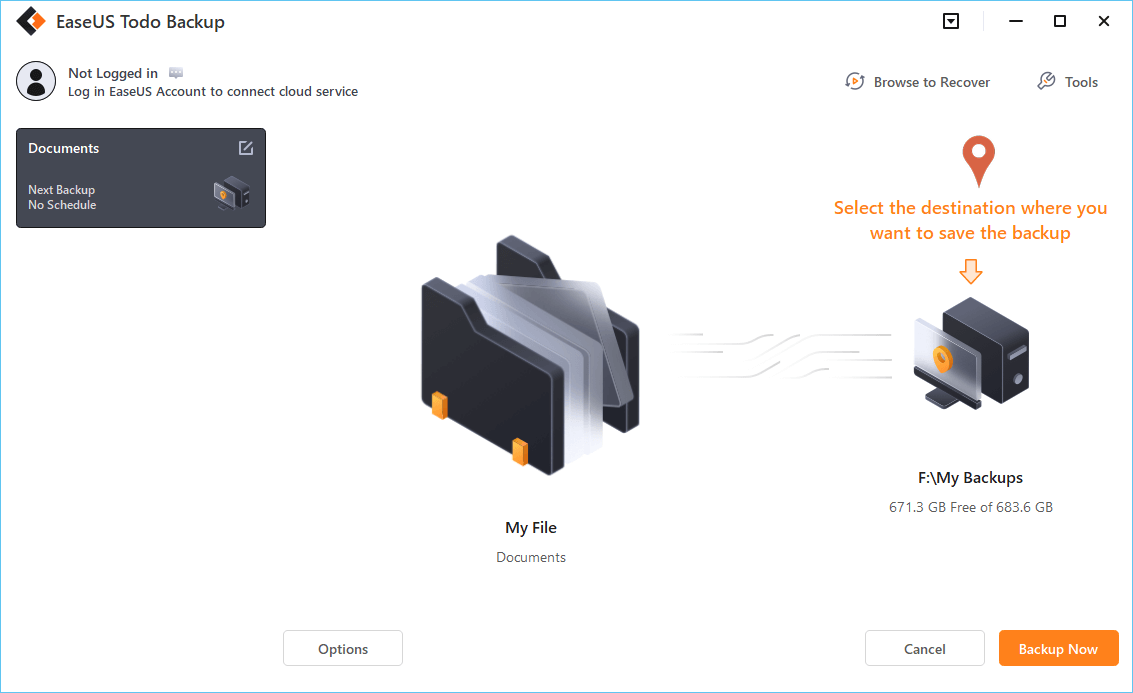
Make sure that the backup is encrypted and set the backup schedule by clicking Options in Backup Options. You can also choose to start the backup at a certain time in Backup Scheme by clicking Options. There are many other customizable options that you can look into.
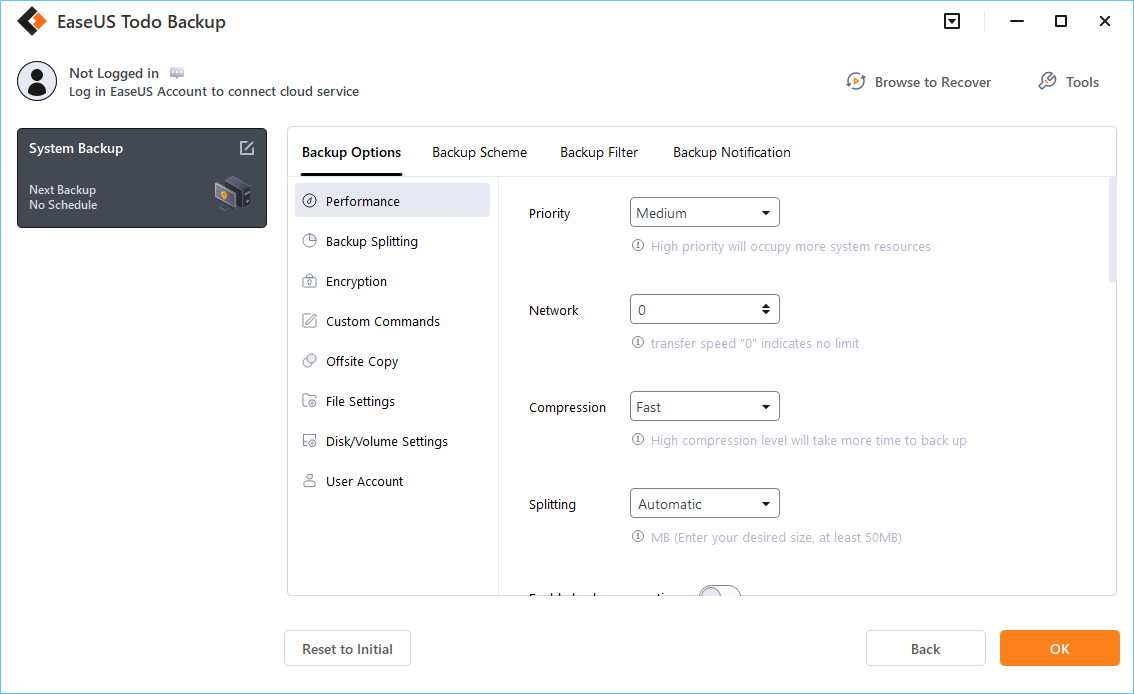
Step 5. You can store the backup file either on your computer, in EaseUS's cloud service, or on a network-attached storage device (NAS).

Step 6. EaseUS Todo Backup enables customers store backup copies of their files on a third-party cloud drive or on the company's own cloud storage.
If you want to back up your data on a third-party cloud drive, select Local Drive and scroll down to add Cloud Device. Then fill in your account information.
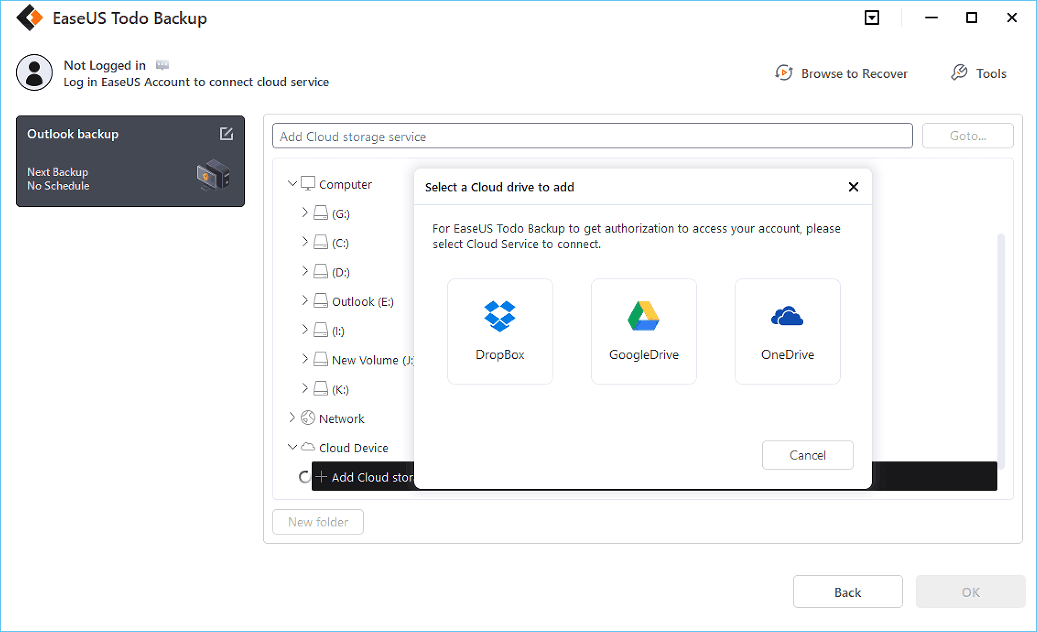
Click EaseUS Cloud, then sign up and log in with your EaseUS account if you wish to store backup files to EaseUS' own cloud storage service.
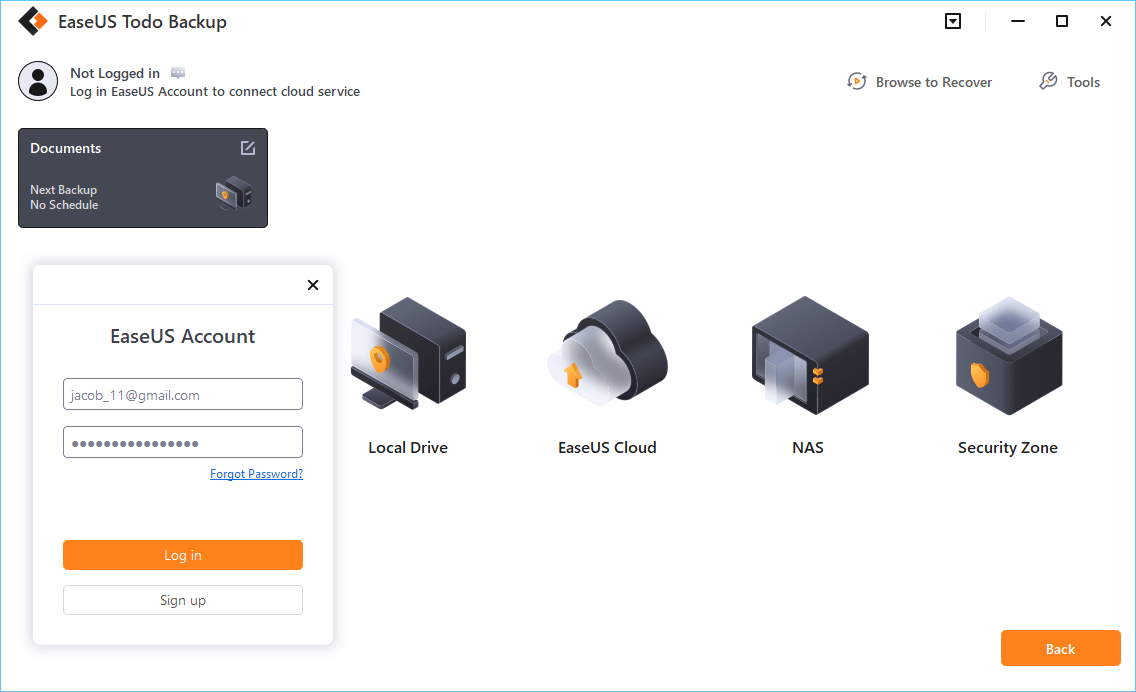
Step 7. Click on Backup Now to start a backup. When the backup process is done, it will display as a card on the left-hand side of the screen. A right-click will let you see more about how to handle the backup job in more depth.
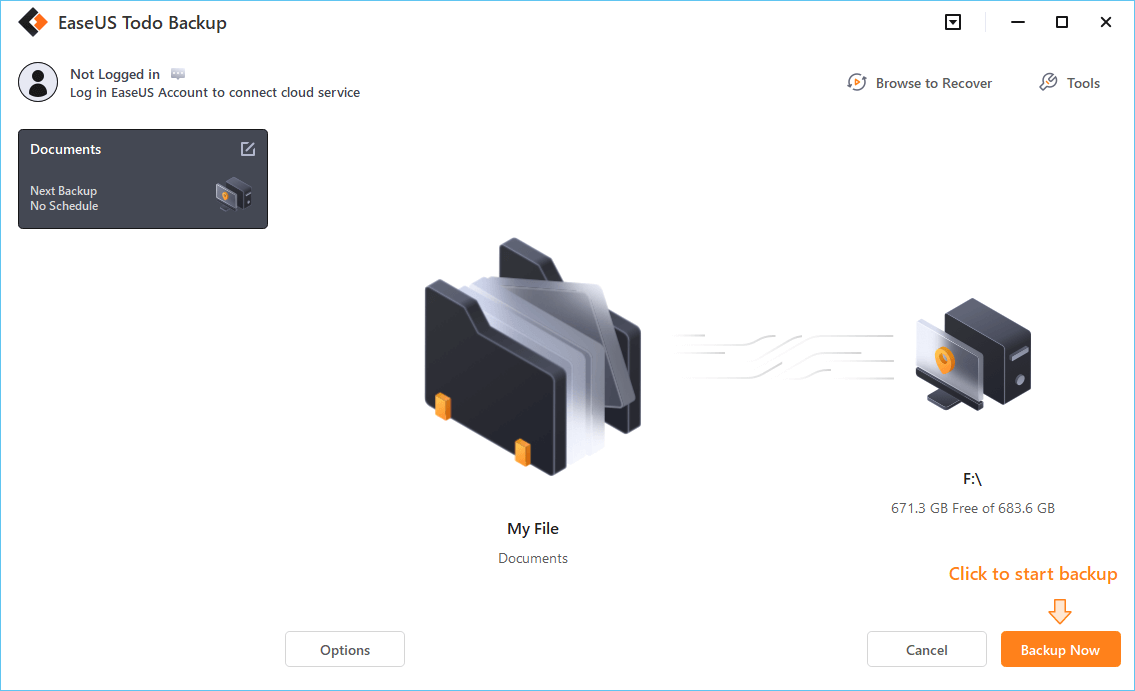
Way 2. Backup Synology NAS to pCloud with Rclone
Rclone is an open-source command-line program to synchronize and manage data on pCloud storage. It has multiple features for storage services, such as S3 object stores, commercial file storage services, and FTP.
Rclone allows users to move files between cloud storage providers and local file systems. Users can also synchronize files between two remote cloud storage providers and between a cloud system and a local file ystem. But as it is a command-line program, it is not user-friendly for people who don't have technical knowledge.
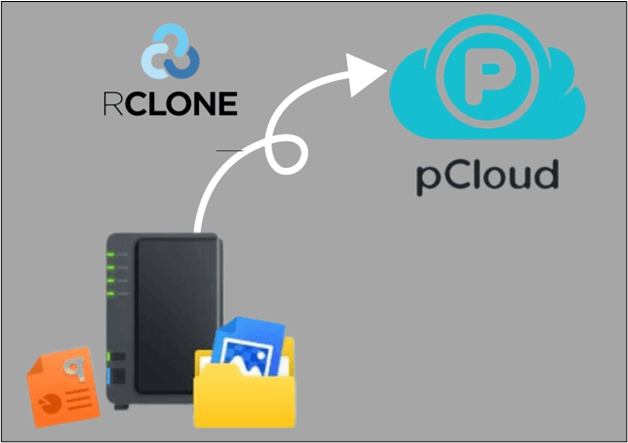
Here are the steps to Backup Synology NAS to pCloud using RClone:
Step 1: Install RClone on Synology NAS: Enable SSH access on your Synology
NAS: DSM Control Panel > Terminal & SNMP > Terminal. Install Rclone.
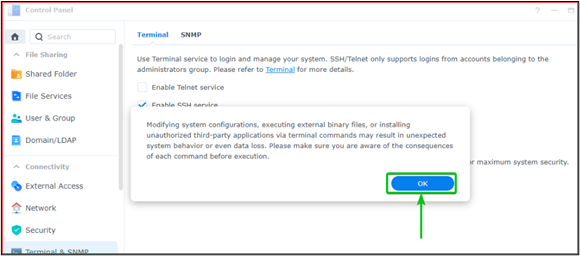
Step 2: Configure pCloud Remote: Run the command
root@mynas:~# rclone config.
It will set up a remote connection with your pCloud account. Configure the remote by following the prompts.
Step 3: Create a Backup Command: Write a backup command on the command-line interface. An example command might look like:
Rclone sync /path/source file remote-name:/path/in/pCloud


Step 4: Test and Execute the Backup: Execute the backup command. It will initiate the backup process.
Step 5: Monitor and Verify: Check the files in pCloud to verify if synchronization is successful.
If it's useful to you, share it with your friends:
To Wrap Things Up
NAS or other hardware storage devices are not much safe for long-term usage as they may encounter any damage or malware. To avoid any data loss or damage, it's essential to backup Synology Nas to pCloud. The article described two methods of transferring data to pCloud: EaseUS Todo Backup and RClone. The EaseUS method is simple and easy to use, whereas Rclone requires technical knowledge.
To summarize, the most effective way of transferring NAS to pCloud is EaseUS Todo Backup. With millions of positive customer reviews and ratings, EaseUS Todo Backup Home is the most reliable data-sharing app.
Secure Download
FAQs on How to Backup Synology NAS to pCloud
1. Can I back up my Synology NAS to the pCloud?
There are multiple methods to back up Synology NAS to the cloud, but the most effective and easy way is to use EaseUS software. Along with offering an easy user interface, it ensures ultimate data protection.
2. Can you backup Synology NAS to an external hard drive?
EaseUS software makes it easier to back up Synology NAS to an external drive. All you need to do is install and run the EaseUS app. Follow the prompts to start back up within a few seconds. There are multiple backup options to customize the process. Furthermore, you can also schedule daily, weekly, and monthly automatic backups.
3. Can I back up my Synology NAS to OneDrive?
Yes! Some apps like EaseUS offer advanced features for users. You only need to install the application on your computer and follow these steps:
- Open and select the files/folders and click "OK."
- The next step is to click on the destination file/folder (OneDrive).
- Save the backup file. Right-click on any backup file to recover it.
4. Does Synology NAS have a backup?
No, we can't use Synology NAS as backup devices as they can damage over time. Creating a backup of all your files and data on pCloud can help. Make sure to use a reliable and protected app like EaseUS Todo Backup to create backups.
Was this page helpful? Your support is truly important to us!

EaseUS Todo Backup
EaseUS Todo Backup is a dependable and professional data backup solution capable of backing up files, folders, drives, APP data and creating a system image. It also makes it easy to clone HDD/SSD, transfer the system to different hardware, and create bootable WinPE bootable disks.
Secure Download
-
Updated by
"I hope my articles can help solve your technical problems. If you are interested in other articles, you can check the articles at the bottom of this page, and you can also check my Facebook to get additional help."…Read full bio
EaseUS Todo Backup

Smart backup tool for your files, disks, APPs and entire computer.
Topic Clusters
Interesting Topics

